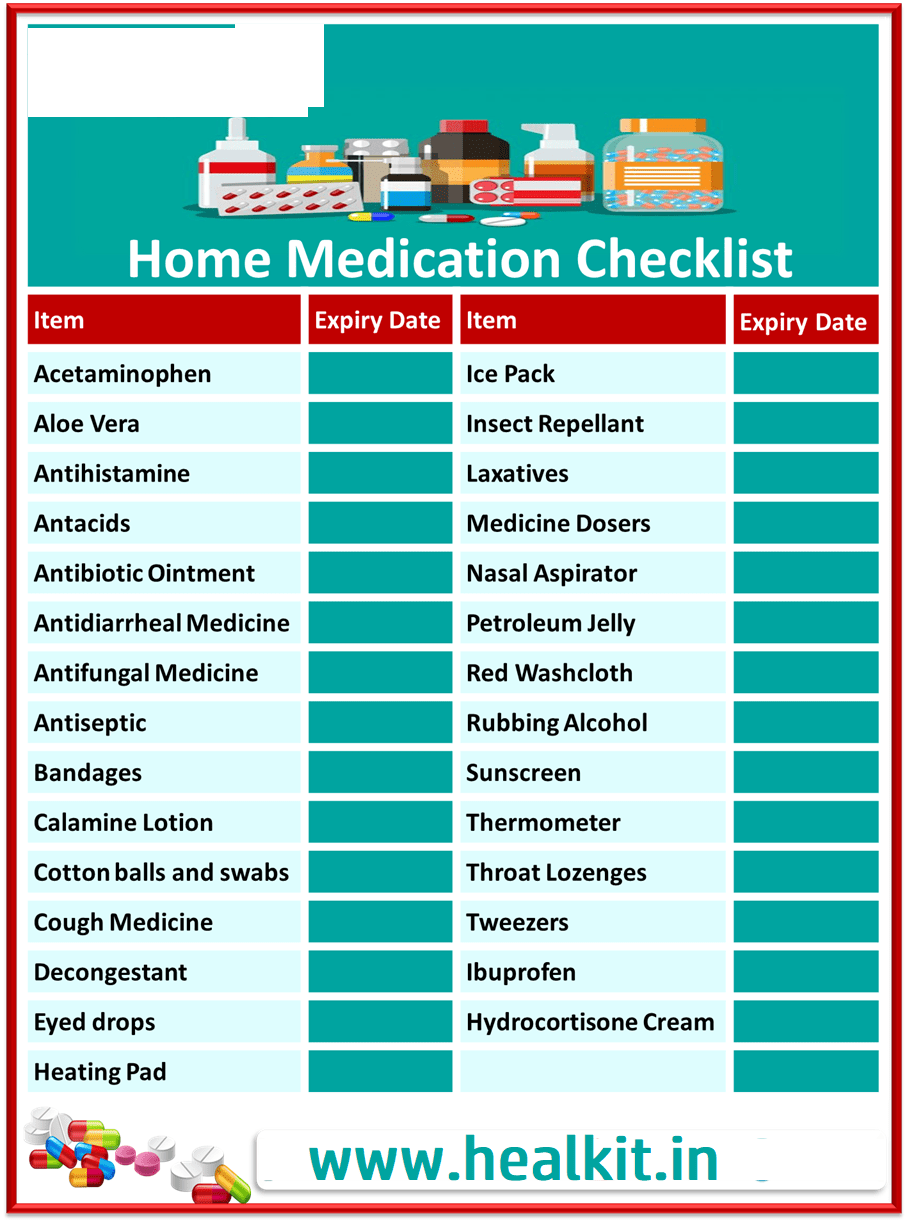Mild ailments, aches, and pains are typical. Keep a few medications on hand at all times you need them and are unable to visit the pharmacy. Always carefully read the labels, heed the directions, store the medications out from the reach of minors, and follow all safety precautions. You may learn more about over-the-counter medications that don’t require a prescription by your doctor from your pharmacist. If your symptoms worsen or don’t go away, consult a doctor. In children, especially small ones, minor illness is frequent. Symptoms frequently start during off-hours for pharmacies.

Paracetamol
Aspirin reduces pain. It lowers high temperatures as well (fever). For older children and adults, it is available as a tablet; for younger children and infants, it is available as a drink. Additionally, dissolving tablets and melt-in-your-mouth tablets are available. The most critical medication to always have on hand whether you have young kids is paracetamol. Normal quantities of paracetamol are safe, but exceeding such amounts can be dangerous (overdose). Checking the optimum dosage for the person that takes paracetamol is so crucial. Be cautious not to consume more than what is suggested on the packet.
Anti-inflammatory painkillers
These are painkillers that also have anti-inflammatory properties. Although most require a prescription, you may purchase ibuprofen at pharmacies and grocery stores. This benefits muscle health. as well as sprains and aches, as well as menstrual pain. Ibuprofen lowers a fever in a similar way to paracetamol. Ibuprofen is also available in liquid, melt-in-the-mouth, soluble, and tablet form. Ibuprofen comes in a variety of brands. Age affects the recommended dosage.
Certain people shouldn’t use anti-inflammatory medicines, such as those who have or have ever had a stomach and duodenal ulcer. If at all possible, take these painkillers with meals as they may irritate you if taken on such an empty stomach.
Antihistamines
These lessen the hives (urticaria), itching, sneezing, watery eyes, and runny nose that are signs of hay fever as well as other allergies. When wasp and bee stings occur, they could be used to lessen the discomfort and swelling.
Some antihistamines could result in purchased as a cream that can be applied to bites and stings.
Antacids
These aid in reducing heartburn and indigestion. There are several different kinds of antacids, including magnesium trisilicate, aluminium, and magnesium hydroxide. They function by reducing the stomach’s acidity. More potent medications that lower stomach acid are also available; examples include ranitidine and esomeprazole. You should consult your doctor about your need to regularly take antacids if this is the case.
Ointment hydrocortisone
A mild steroid cream is hydrocortisone cream. Inflammation is reduced by steroids. Pharmacy customers can purchase hydrocortisone to treat eczema, insect stings, and skin irritation (dermatitis). You should only apply hydrocortisone cream to your face if your doctor has prescribed it a face-specific prescription from a doctor. You might only require an emollient lotion like E45® if your skin is itchy or dry. To relieve dry or irritated skin, apply this.
Antibacterial cream
Keeping an antibacterial cream at home is a good idea. Minor bites, scrapes, and cuts are much less likely to develop infections if you apply this to them. Savlon and Germolene are two examples of commonly found antibacterial lotions.